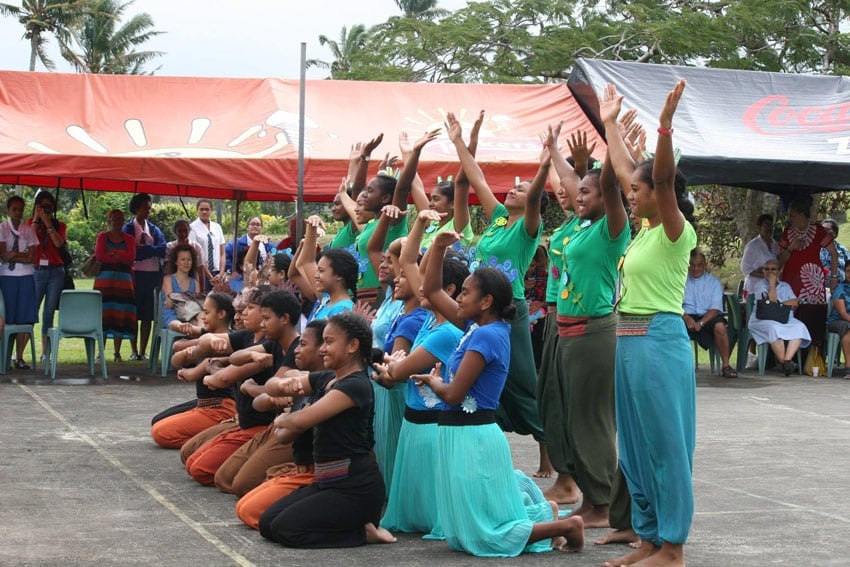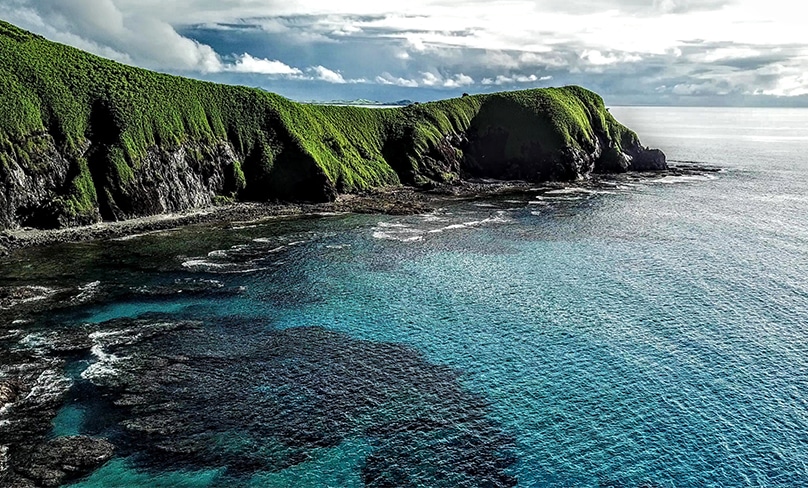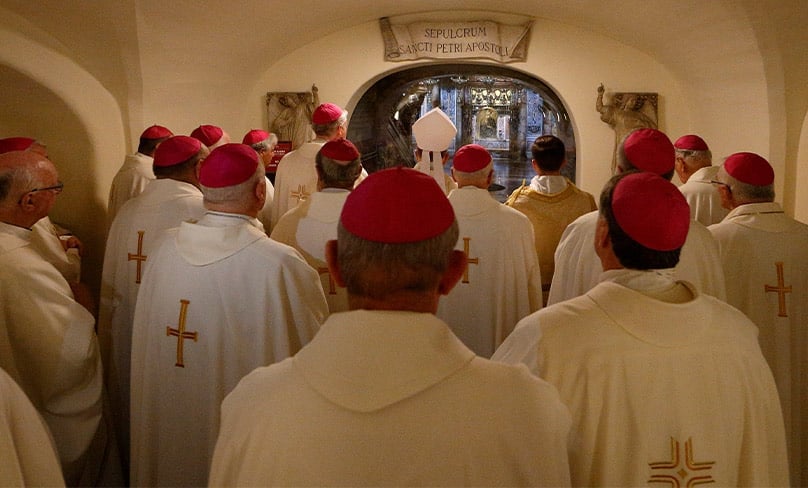
By the time Australians are straggling back to work after Australia Day the synod on synodality will be moving into its Continental Stage – and the beginning of two years of a massive global transformation for the Church.
Australia is a member of the Federation of Catholic Bishops Conferences of Oceania (FCBCO). Its Continental Assembly will gather in Suva, Fiji, from 5-10 February 2023.
FCBCO President Archbishop Peter Loy Chong of Suva looks to be the leading figure in the region for this next stage of the synod, and has begun to show what Oceania’s priorities will be.
At a three-day conference in late November hosted by the FCBCO and Australian Catholic University called Our Ocean Home, Archbishop Chong laid out an agenda for “Oceanian theology”.
He is drawing on decades of ecumenical work by Pacific Islanders but much of his approach will surprise Australian Catholics, including some bishops.
“Archbishop Chong said theology in Oceania needs to move away from a romantic approach to inculturation, in which Indigenous symbols and themes are used by outsiders to explain doctrine to local people.”
Archbishop Chong seems to be inspired by three sources: environmental concerns, Indigenous practices and ways of knowing, and liberation theology.
To put the last first: the Archbishop said theology in Oceania needs to move away from a romantic approach to inculturation, in which Indigenous symbols and themes are used by outsiders to explain doctrine to local people.
Archbishop Chong said that these approaches must give way to “action on behalf of suffering peoples”.
He cited radical liberation theologians Dorothy Soelle, Jon Sobrino, Gustavo Gutiérrez, Leonardo Boff and others as influences.
The ongoing influence of Latin America on the global synodal realignment can perhaps be felt most strongly here; liberation theology was firmly censured during the previous two pontificates, but is now returning to the centre of theological discourse in the developing world.

The second major source of Oceanian theology – threats to the environment – draws heavily on the Holy Father’s encyclical Laudato Si’ in its emphasis on integral ecology.
At the Our Ocean Home conference, First Nations representatives from Papua New Guinea, Tuvalu, Fiji and other nations, alongside scientific experts, spoke of the effects of climate change, extractive industries, industrial pollution, overfishing and other sources of degradation on Pacific Nations.
Ms Rosa Koian, an activist from PNG, gave a fascinating insight into the economic and environmental impacts of the “total failure” of the country’s deep-sea mining project, Solwara 1.
Contractor Nautilus Minerals began exploratory drilling with specially-retrofitted robots in 2016, promising to mine undersea thermal vents for zinc, cobalt, manganese and other raw materials.
Now the company is in administration and the PNG government is struggling to recover nearly AUD$160m.
“A local theology for Oceania would instead start from the environmental and traditional practices Indigenous to the area.”
“Have they brought any tangible benefits for us? We haven’t seen much except damages,” Ms Koian said.
Should the Church concern itself with such a situation? Oceanian theology says yes, because Indigenous practices and the environment are felt to be highly inter-dependent, and are threatened by Western economic and technological colonisation.
A local theology for Oceania would instead start from the environmental and traditional practices Indigenous to the area.
For example, Archbishop Chong promoted the Tongan-born Fijian Anglican Bishop Winston Halapua, whose “Theomoana” theology takes the ocean [moana, for which the Disney character is named] as its foundation.
Bishop Halapua wrote in 2008 that a moana approach [vaka] is “a way of promoting justice, peace and hope”.

“Intrinsic to the vision and the whole construction of the vaka is a whole paradigm shift which is distinct from a land-locked approach.
“The whole world view embodied by the vaka is the interconnectedness of the oceanic context with the planet earth.”
Another key concept is talanoa – story-telling, discourse, dialogue, with an emphasis on circularity rather than argument.
It lines up neatly with practices like Aboriginal “yarning circles”, with the “spiritual conversations” that were the governing methodology of the Plenary Council, and indeed with the circularity of the synodal project in general.
A whole host of these “contextual theology” approaches have been developed in Oceania in recent decades, beginning with the work of the late Reverend Dr Sione ‘Amanaki Havea.
Rev Havea is most famous for his 1985 statement that if Jesus had lived in the Pacific, he would have said, “I am the Coconut of Life.”
“Yet for those only just tuning in now, the whole point of synodality is to bring into the centre the symbols, themes and language of the margins.”
For many Sydney Catholics this “Coconut theology”, as it is called, will come as a novelty.
The whole idea of an Oceanian theology might be a bridge too far for some – doesn’t the Church already have its theology? Isn’t St Thomas Aquinas for everyone?
Yet for those only just tuning in now, the whole point of synodality is to bring into the centre the symbols, themes and language of the margins – Indigenous people and the developing world in particular, given Pope Francis’ priorities.
Indeed the document for the Continental Stage, which will be discussed in Suva in February, takes Isaiah 54:2 as its scriptural focus, calling on the Church to “enlarge the space of your tent”.
Can the church grow large enough to fit both Sydney and Suva’s priorities in the one tent?
We’ll have to wait until February to find out.
Related Articles:
